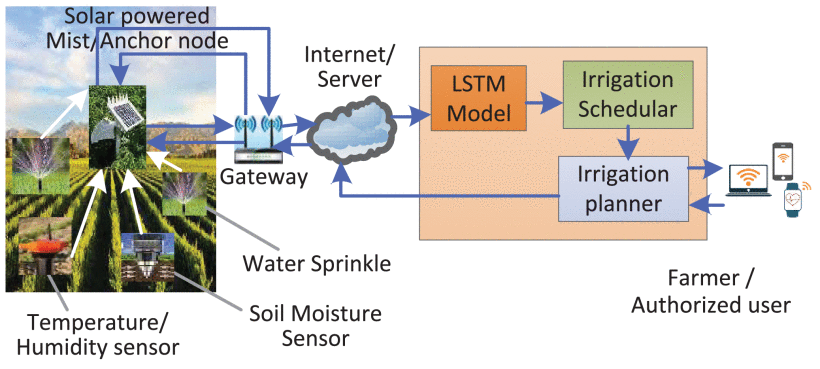Towards Precision Agriculture: IoT-Enabled Intelligent Irrigation Systems Using Deep Learning Neural Network
Increasing populations, rapid urbanization, and climate change are contributing to the scarcity of freshwater resources and arable land worldwide. Interestingly, the agriculture sector uses about 70% of the water in most developing countries. Smart, precise irrigation management is necessary for water conservation and improving crop productivity. For decades, various mechanical irrigation systems have been used to schedule irrigation using drip, flood, and sprinkle irrigation.
Traditional methods need to process climate and soil moisture dynamics in real time. The advancement of sensor and wireless technology makes it possible to implement machine-learning models to design Internet of Things (IoT)-based, automated irrigation management systems. The sensors record soil characteristics like moisture, nutrients, textures, and climatic parameters. A machine learning (ML) model processes the data. Based on the prediction done by ML models, the sprinklers, drip irrigation, or water pumps are triggered.
Early ML models can predict soil moisture in advance when the water content goes below the wilting point of the soil. The models learn by comparing pre-processed data to real-time measurements. The limited learning ability restricted their applicability to a more divergent range of climate and soil conditions. The recurrent neural network (RNN) model uses memory cells to store previous data and use it for future processing. An RNN-based model, the hydrological Long Short-Term Memory Network (LSTM) model, showed better prediction results based on the temporal dynamics of climate and soil. However, even LSTM models are not self-adaptable, and deployment in new regions can take time and effort.
The study presents a deep learning neural network-based IoT-enabled intelligent irrigation system for precision agriculture (DLiSA). As the name suggests, the prototype comprises irrigation and IoT network systems. The IoT network collects soil data from wireless sensor nodes deployed on farmland and weather forecast reports. A deep LSTM RNN employs a one-step training procedure using the collected data to predict the volumetric soil water content for the next day. A soil classifier determines the soil's water retention capability. The soil and crop information are then fed into the irrigation scheduling algorithm. The irrigation planner estimates the spatial and temporal distribution of water volume needed and the time required to irrigate the farmland. The end-user, like a farmer or an automated irrigation system, uses this estimate for further action.
Historical data on soil moisture, temperature, climate, and rainfall obtained from a geographic information system server was used to train the proposed LSTM-RNN model. For testing and calibration, the DLiSA prototype was simulated for soil moisture prediction using Python 3.8.1. It was tested and calibrated at three different locations for more than 1.5 years. For each site, the DLiSA produced highly accurate volumetric soil content predictions. The prototype is comparable to existing state-of-the-art models in terms of reliability and water conservation.
In future irrigation research models, the effect of rainfall can be accounted for in addition to soil conditions and geographical locations to ensure enhanced water conservation.




